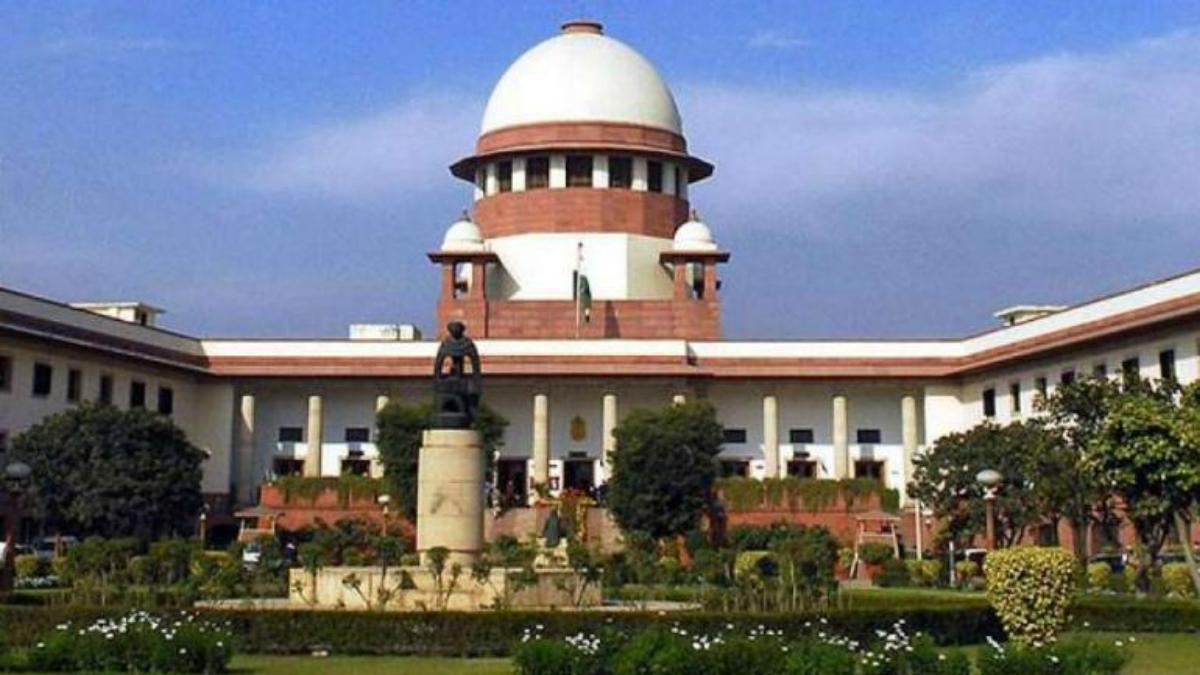
Supreme Court of India. Photo: PTI.
The Supreme Court of India has ruled that the width of the Char Dham Highway, currently under construction, shouldn’t exceed 5.5 metres – going against the Centre’s wish that the highway should be 7 metres wide.
The highway is being constructed by the Ministry of Road Transport and Highways (MoRTH). Once complete, it will be 900 km long and connect four important Hindu pilgrimage sites: Kedarnath, Badrinath, Gangotri and Yamunotri, all in Uttarakhand.
The apex court’s decision, published on September 9 but largely slipping under the media radar, followed a controversial recommendation by the committee of experts. The court had appointed this committee in August 2019 to assess the road’s width. After deliberations, a ‘majority’ group submitted one report recommending a width of 7 m while a ‘minority’ group, which included committee chairman Ravi Chopra, recommended a report pitching for a width of 5.5 m.
As The Wire Science reported at the time, the split consensus was the result of a little-known circular that MoRTH had issued in 2018. In the text, the ministry had said that due to some problems it had had with building two-line roads with paved shoulders, the part of the road carrying the vehicles – called the carriageway – should be limited to 5.5 m (23 feet).
In an exclusive interview with The Wire Science, committee chairman Ravi Chopra had said the minority group, with which he sided, had advocated for a carriageway 5.5 m wide with another 1.5 m on either side, the ‘paved shoulders’, plus some space for drains. This would bring the highway’s total width to “7-8 metres”, according to Chopra.
The majority view had pushed for a 12-m-wide highway, with 7 m for the carriageway and the rest for the paved shoulders. Chopra had said in his interview that the figure of 12 m had come from an engineer-representative of the Border Roads Organisation, who said the width would facilitate the movement of military vehicles to and from the border.
However, Chopra had contended in his interview:
“Whenever he was asked to explain what is the width of defence vehicles, he never gave an answer. And if the road width is not adequate, how have troops and materials reached the border until today? When the military moves, it moves in a single column; remember Pulwama. It’s a single column that moves and all other traffic is suspended. So to me, it’s a very specious argument.”
The matter was brought before the bench, comprising Justices Rohinton F. Nariman, Indira Banerjee and Navin Shah, in the first place due to a petition filed by an environmental group called Citizens of Green Doon.
During the hearing, solicitor general Tushar Mehta had submitted to the bench of justices that the 2018 MoRTH circular applied only to future projects, not ones already under construction. However, noting that parts of the Char Dham highway are yet to be built, the court dismissed the argument and decided that forthcoming construction should limit the carriageway to a width of 5.5 m to minimise the risk of landslides.
Hindustan Times reported that the bench asked Mehta, “All you have to do is to go by your 2018 guidelines. How can you not go by your own guidelines?”
C.P. Rajendran, a professor of geodynamics at the Jawaharlal Nehru Centre for Advanced Scientific Research, Bengaluru, had written for The Wire Science on September 9:
“The current project seeks to convert the existing narrow mountain road into an eight-metre wide highway to ease motorised travel. In its enthusiasm to promote unrestrained tourism and local employment, the Union government turns a blind eye to the danger that this project is going to unleash on Himalayan ecosystems.”
The project had also been able to evade an environmental impact assessment because, as Rajendran wrote, “This combined 900-km stretch has been presented in segmented bits each less than 100 km long.”
In his interview, Chopra had alleged that “there has been an absolutely systematic attempt to deny us and withhold information, no matter how many times it has been solicited.” He said he had sent several letters and oral communiqués to MoRTH discouraging a wider highway – “otherwise, during monsoons, these mountains are going to come down” – only to be met with silence.
According to him, the ministry didn’t respond to an interim report sent in February, and only asked for a summary of recommendations in April. Further, he also said he received very minimal assistance from “the entire administration of the government of Uttarakhand” and “all district magistrates” save a few. “How many times do I ask?”
“Though the mainstream media ignored the order issued by the Supreme Court to keep the width of the Char Dham highway at 5.5 m instead of the government’s plan of 8 m, this is great news for all those who have campaigned against the assault on the Himalayan ecology,” Rajendran told The Wire Science in light of the verdict.
“I think the court’s intervention is historic and I hope to see more of these interventions in future. The country’s environment should not be a bargaining chip for the so-called developmental projects.”
On September 15, Hindustan Times reported that Uttarakhand chief minister Trivendra Singh Rawat is expected to write to MoRTH impressing the need for a wide highway, after his government has “studied” the Supreme Court’s verdict.

